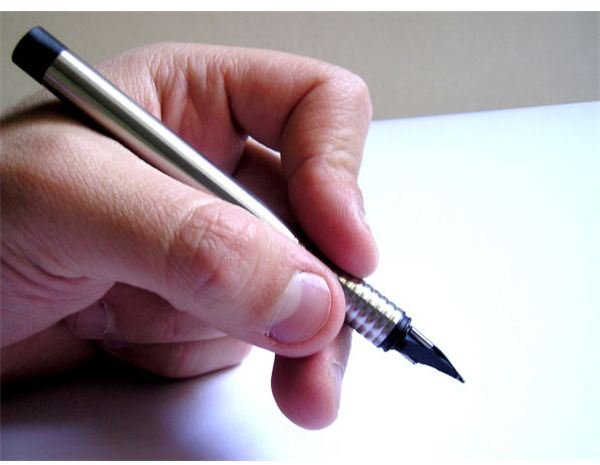For Older Children: Handwriting Help: How Can Your Child Improve His Handwriting?
Not Unless They’re Doctors
For many years there has been an ongoing joke about how it is impossible to read a doctor’s writing. While that may seem acceptable and even humorous when you’re talking about doctors, for parents, there is nothing funny about the inability to be able to decipher their child’s handwriting. There are many different reasons why children have writing difficulties.
Help With Handwriting
One reason a child may have poor writing skills is due to lack of practice. In today’s world of computer technology, many children do not have the same amount of writing time in school that parents used to have. If this seems to be the problem, allow your child additional writing opportunities at home. Although books on learning how to write are available at stores, they are generally geared for younger writers and they may bore older children.
Instead, let your child write about something that holds a place of interest. For example, if you have a fan of Harry Potter, suggest writing about their favorite character. If your child is sports minded, writing about a favorite sport may have some appeal. The important issue is to offer a topic that would hold an interest for the person doing the writing.
Handwriting Problems

Another issue with handwriting is the proper placement of the pencil. Ideally, a pencil should be held between the index and middle finger with the pencil resting at the base of the thumb. This is known as the tripod grip. If your child does not hold a pencil or pen this way, then switch to this pencil-holding formation. Purchasing a pencil grip can help.
Other issues may exist explaining why older children have handwriting problems. One can be dysgraphia, which is a learning disability that often involves sequencing problems. Another is ADHD, otherwise known as Attention Deficit Hyperactivity Disorder, which can affect a child’s ability to concentrate. Symptoms include the inability to focus on one thing, being easily distracted, difficulties in processing information and not listening when being spoken to.
Shoulder stability can also come into play when it comes to a child’s writing. Try this quick experiment. Take a piece of paper and a pencil and write a sentence. While writing, notice how much your shoulder moves as you write. This shows the proper stability. Without good shoulder stability, the joint will be loose instead of stable, which will cause difficulties in writing.
How to Improve Fine Motor Skills
The earliest form of writing begins with scribbling. This is usually when a child is a toddler. Over time it becomes more refined as a child learns to first write letters, then words and finally sentences. Much of their ability to write is due to the development of their fine motor skills. Should these skills be lacking, it can lead to the inability to write legibly. Fortunately, there are many things parents can do to help improve these skills.
Find some old newspapers and magazines and have your child take turns both cutting and tearing them up. This may seem rather juvenile if the child is in their teens. It can be made more interesting by providing magazines with pictures of things the teen has an interest in. Once the pictures are cut out, you can provide a poster board where the pictures can be glued. When it dries they can hang it up in their bedroom.
Get some Play-Doh and, with the use of the fingers only, let the kid’s imagination run wild. Playing with Legos is a good way to help improve fine motor skills. There are many different themed kits to choose from including Star Wars, Harry Potter, SpongeBob SquarePants, Pirates of the Caribbean and Toy Story. Choosing a kit should reflect on the age and interests of the person who will be using it. Additional suggestions include jigsaw puzzles and jewelry making kits. Overall, the basic idea is to find something small a kid can play with.
There are other factors that can contribute to problematic writing skills including conditions such as poor visual conception and lack of proper trunk control. If the handwriting problem seems as simple as the incorrect positioning of holding a pencil, lack of practice or the need to improve fine motor skills, then try to help your child with some of the suggestions listed above.
However, if there seems to be any type of medical condition associated with the lack of handwriting skills, it is best to consult with your child’s physician. In addition, if you have older children, writing help is available at your child’s school. Contact the school to find out what type of programs they have that can aid in helping to develop handwriting skills. Keep in mind that good writing skills reinforce good reading skills.
For one reason or another, not all kids can have perfect penmanship. Nevertheless, there are things that parents can do to help their children develop better writing skills.
References
- Bottom photo by Alvimann at http://www.morguefile.com/archive/display/207148
- Handwriting Help for Kids, http://www.handwritinghelpforkids.com/basics.html
- Family Education, http://school.familyeducation.com/penmanship/growth-and-development/38388.html
- Top photo by doctor_bob at http://www.morguefile.com/archive/display/54395
- Kids Health, http://kidshealth.org/parent/growth/communication/handwriting.html#
